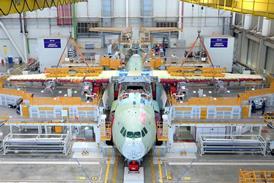ARIANE AND DELTA boosters have been used to start what promises to be the busiest year ever for commercial launches, with three satellites for Malaysia, South Korea and US company PanAmSat being placed in orbit on 12 and 14 January, respectively. Over 25 other geostationary communications satellites are scheduled to be launched by these and other boosters in 1996 (Flight International, 3-9 January).
Arianespace flight V82, using the eighteenth successful 44L model (the most powerful Ariane 4, with four liquid-propellant strap-on boosters) carried Malaysia's Measat 1, a Hughes HS-376 spin-stabilised spacecraft, and the PanAmSat 3R, a replacement for the HS-601 three-axis-stabilised model lost in a December 1994 Ariane failure.
Flight V83, which is due for a 2 February launch from Kourou, French Guiana (using the fifth P booster equipped with four solid-propellant strap-on boosters) will carry the Japanese NStar B, built by Loral Space and Communications.
Arianespace has received two further contracts to launch the Arabsat 2B and PanAmSat 7, bringing to 38 the number of firm assignments for the Ariane 4 and 5 launchers, with three more - the Meteosat Second Generation 2 and 3 and the Nilesat - yet to be confirmed.
The Lockheed Martin Astro Space/Matra Marconi Space-built Koreasat 2 communications satellite was launched from Cape Canaveral on 14 January, using the 33rd successful McDonnell Douglas Delta 2/7925 booster. The Koreasat is a Lockheed Martin Satcom 3000 series satellite, for which MMS built the communications payload.
The Delta 2 has three outstanding commercial launches of communications satellites, the Galaxy 9, Skynet 4D and Thor 2A, in addition to 19 other firm launches. The new Delta 3, scheduled to have its maiden flight in 1998, is already booked to carry ten HS-601-class spacecraft.
Source: Flight International













































